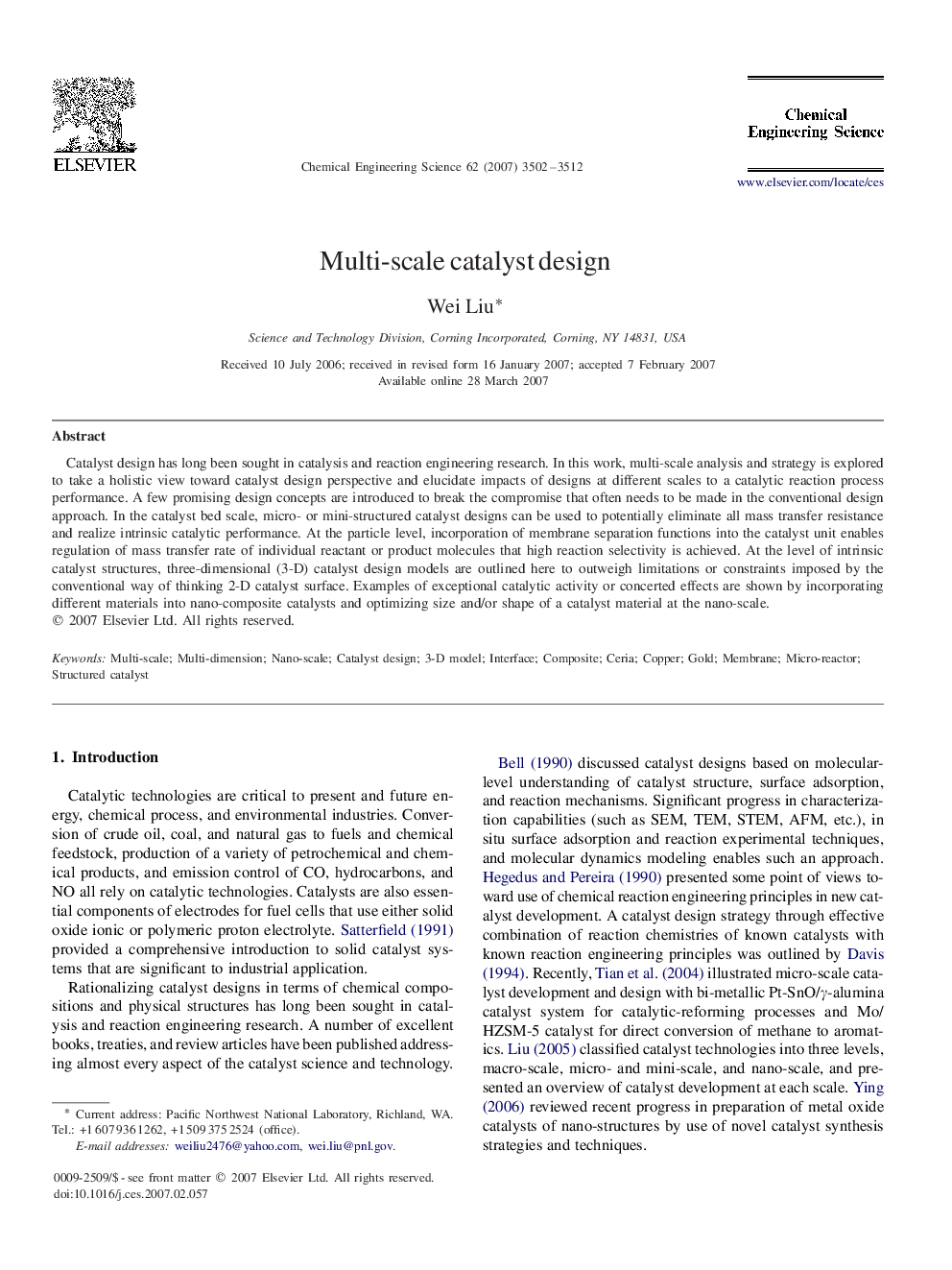| Article ID | Journal | Published Year | Pages | File Type |
|---|---|---|---|---|
| 159183 | Chemical Engineering Science | 2007 | 11 Pages |
Catalyst design has long been sought in catalysis and reaction engineering research. In this work, multi-scale analysis and strategy is explored to take a holistic view toward catalyst design perspective and elucidate impacts of designs at different scales to a catalytic reaction process performance. A few promising design concepts are introduced to break the compromise that often needs to be made in the conventional design approach. In the catalyst bed scale, micro- or mini-structured catalyst designs can be used to potentially eliminate all mass transfer resistance and realize intrinsic catalytic performance. At the particle level, incorporation of membrane separation functions into the catalyst unit enables regulation of mass transfer rate of individual reactant or product molecules that high reaction selectivity is achieved. At the level of intrinsic catalyst structures, three-dimensional (3-D) catalyst design models are outlined here to outweigh limitations or constraints imposed by the conventional way of thinking 2-D catalyst surface. Examples of exceptional catalytic activity or concerted effects are shown by incorporating different materials into nano-composite catalysts and optimizing size and/or shape of a catalyst material at the nano-scale.
